Do you ever find yourself frustrated with a toilet that doesn’t fully flush? The keyword “toilet doesn’t fully flush” can be a common and annoying problem that many people encounter. But fear not, because in this article, we will delve into the basics of toilet mechanics and provide you with some practical solutions to fix this issue.
Whether it’s a clogged toilet, malfunctioning flapper, or problems with the inlet holes, we’ve got you covered. So, if you’re tired of dealing with a toilet that just won’t flush properly, keep reading to discover how you can resolve this problem and ensure a fully functional bathroom experience.
If you’re struggling with a toilet flange that is too high, check out our article “Dealing with a Toilet Flange That is Too High” for helpful tips and solutions to fix the problem.
Summary in three points
- Understanding the basics of toilet mechanics, including the function of the flapper, the role of the overflow tube, and the importance of inlet holes.
- Identifying possible problems with your toilet, such as signs of a clogged toilet, issues with the flapper, problems with the inlet holes, and complications with the overflow tube.
- How to fix a toilet that doesn’t fully flush, including clearing a clogged toilet, fixing or replacing the flapper, cleaning the inlet holes, adjusting or replacing the overflow tube, and checking and repairing the fill valve assembly.

The Function of the Flapper
The delicate dance of the flapper within the confines of a toilet is crucial to the art of efficient flushing. Its proper alignment is key, allowing it to gracefully open fully when flushed and ushering in a torrent of water into the waiting bowl. However, a misaligned flapper can spell trouble, resulting in a feeble flush that leaves much to be desired.
But alas, the flapper has more tricks up its sleeve. Beware the chain length, for it too can disrupt the delicate balance of the flushing symphony. If the chain is too long, it may become entangled under the flapper, preventing it from closing properly.
Conversely, if the chain is too short, it may hinder the flapper’s grand opening. Adjusting the chain length is of utmost importance to ensure the flapper’s harmonious performance. Should you spy any signs of leakage from the flapper, swift action is required.
A leaking flapper is not only a waste of precious water, but it also leads to a most inefficient flushing experience. One common culprit for leakage is a worn or damaged flapper seal. Fear not, for replacing the flapper or seal can restore the tranquility of a leak-free toilet.
In the grand tapestry of efficient flushing, proper alignment, chain length adjustment, and timely troubleshooting take center stage. By tending to these matters with care and diligence, you can maintain the majesty of a toilet that functions flawlessly and shuns water wastage.
The Role of the Overflow Tube
In the intricate world of toilets, there exists a humble yet vital component known as the overflow tube. This unsung hero tirelessly safeguards against the wrath of water overflow, tirelessly keeping the delicate balance between the tank and the bathroom intact. When the majestic flush occurs, water gracefully cascades from the tank into the bowl, while any excess water finds solace in the comforting embrace of the overflow tube.
However, like any unsung hero, the overflow tube requires care and attention to fulfill its duty faithfully. Over time, debris and mineral deposits gather, forming a formidable blockade that disrupts the flow of water. To prevent the dreaded incomplete flush, regular cleaning and maintenance of this unassuming tube become imperative.
Should the overflow tube falter, its consequences can be dire. Feeble flushes and inadequate drainage become the norm, transforming the sanctuary of your bathroom into a battleground. Swiftly addressing any issues with the overflow tube becomes crucial to restore the harmony of efficient flushing and prevent further toilet tribulations.
Never underestimate the significance of a clear and unobstructed overflow tube. Embrace the ritual of regular cleaning and inspection, for it is through these simple acts that you ensure the seamless functioning of your toilet. Let the overflow tube be your beacon of efficient flushing, guiding you through the labyrinth of potential issues that may lie ahead.
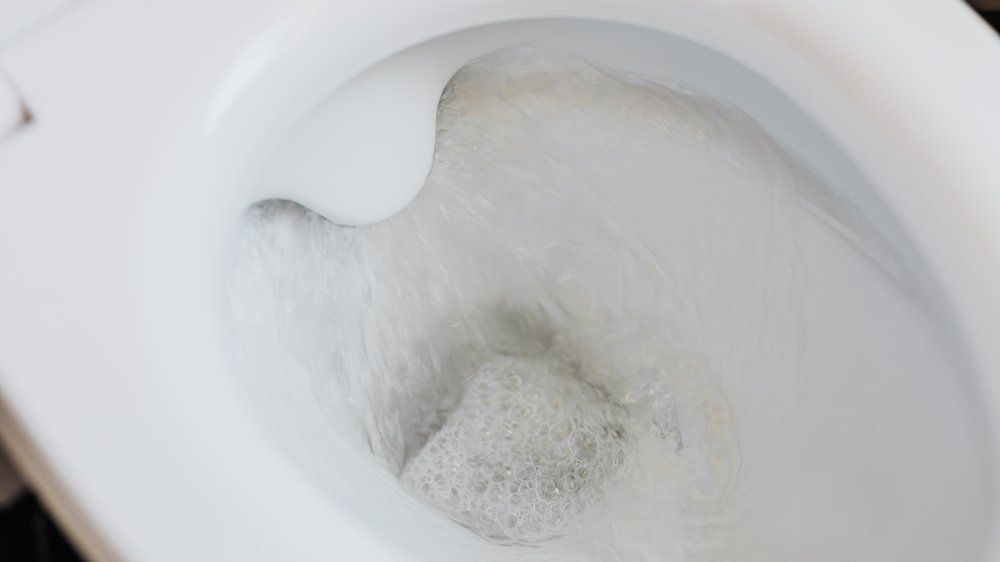
Importance of Inlet Holes
In the intricate mechanics of a toilet, one often overlooks the significance of the inlet holes . These unassuming apertures play a crucial role in ensuring a proper flush . When you press that lever, it is the inlet holes that allow the water to gracefully flow into the bowl, orchestrating a symphony of cleanliness.
But alas, even the most diligent among us can forget to pay homage to these humble openings. Over time, debris and mineral deposits gather, obstructing the flow of water and diminishing the power of the flush. It is imperative, therefore, to undertake the noble duty of regularly cleaning and inspecting these inlet holes.
Armed with a small brush and determination, you must rid them of any impediments, allowing the water to flow freely once more. Should you find your flush to be lackluster, feeble, or sluggish, it is wise to seek the aid of a professional. For the true power of the inlet holes lies not just in their function, but in the understanding of their importance.
By keeping these minuscule components clean and unobstructed, you can rest assured that your toilet will perform its flushing duties with unwavering efficiency. So, dear reader, do not underestimate the might of these unassuming orifices in the grand symphony of your toilet’s mechanics.
Are you tired of waiting forever for your toilet tank to fill up? Check out our article on how to fix a slow filling toilet tank and say goodbye to the frustration!
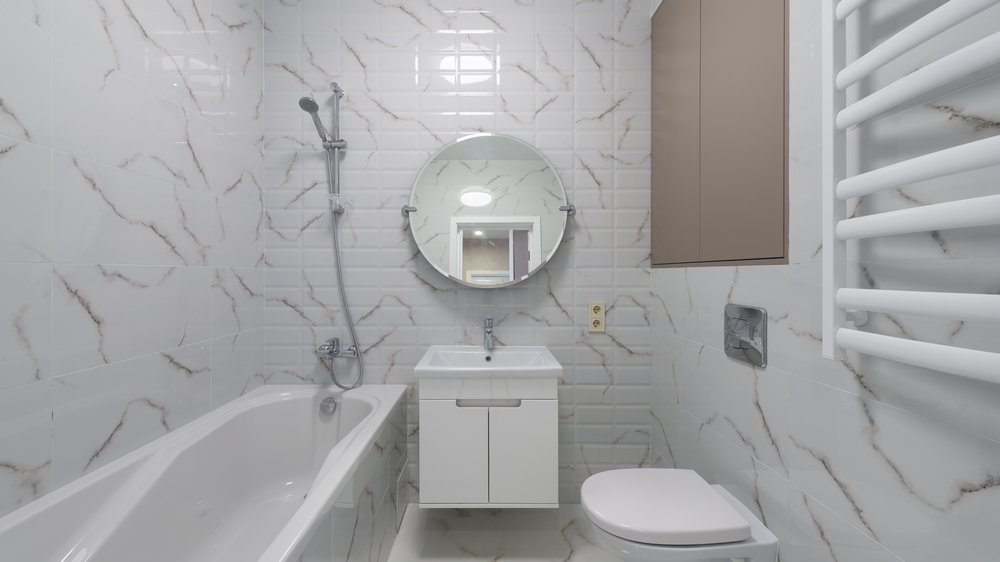
Signs of a Clogged Toilet
When faced with the infuriating and undesirable situation of a clogged toilet, it is crucial to be vigilant and attentive to the signs that emerge, as they serve as a beacon of warning before the problem escalates into something even more dire. One such sign is the slow drainage or the unsettling sight of water rising back into the bowl, indicating the presence of an obstruction. Additionally, if the water takes an inexplicably extended period of time to drain or if it ominously rises after flushing, it is highly likely that a clog is at play.
Furthermore, the eerie gurgling sounds that accompany the flushing process serve as an auditory indication of trapped air, a result of an obstructive barrier. Lastly, the unmistakable stench emanating from the toilet serves as a telltale sign of a clog lurking within its depths. It is of utmost importance to promptly address this issue to prevent any further harm and to restore the toilet to its rightful functionality.
Is your toilet experiencing a slow flush? Check out our article on how to fix a toilet with a slow flush for easy and effective solutions to this common problem.
4 Steps to Fixing a Toilet That Doesnt Fully Flush
- Check for any signs of a clogged toilet, such as slow drainage or water rising to the brim.
- Inspect the flapper to see if it is properly sealing the flush valve. If not, consider fixing or replacing it.
- Clean the inlet holes to ensure proper water flow. You can use a small brush or toothbrush to remove any debris or mineral deposits.
- If the toilet still doesn’t fully flush, adjust or replace the overflow tube to prevent water from overflowing. Make sure it is at the correct height.
Issues with the Flapper
Toilets may experience flushing problems due to flapper issues. If the flapper is misaligned, it can disrupt the water flow and lead to leakage and ineffective flushing. The chain length is another factor that can affect the flapper’s function, causing malfunctions and compromised flushing performance.
Additionally, leaking flappers are a common issue that can waste water and hinder flushing. To resolve these problems, make sure the flapper is properly aligned, adjust the chain length, and replace any leaking or damaged flappers. Regular maintenance and inspection of the flapper will prevent these issues and ensure efficient flushing.
Problems with the Inlet Holes
The role of inlet holes in your toilet may seem insignificant, but they are actually crucial for a successful flush. However, if these holes encounter any issues, it can disrupt the flushing process. One common problem is blockage in the inlet holes, which can lead to water backing up in the bowl.
Debris or foreign objects finding their way into the holes often cause this blockage. To prevent it, it’s important to regularly check and clean the inlet holes. Another issue is the buildup of sediment in the inlet holes, which can reduce flushing efficiency.
Over time, mineral deposits from hard water can accumulate in the holes, restricting water flow and affecting flushing power. Regular cleaning is necessary to prevent this buildup and maintain optimal flushing performance. Speaking of hard water, it can also contribute to mineral deposits in the inlet holes, further causing blockage and reduced efficiency.
If you reside in an area with hard water, it becomes even more essential to clean and remove these deposits from the inlet holes regularly. By addressing and resolving any problems with the inlet holes, you can ensure that your toilet functions properly and efficiently. Regular maintenance and cleaning will prevent any issues and keep your flushing system in excellent working condition.
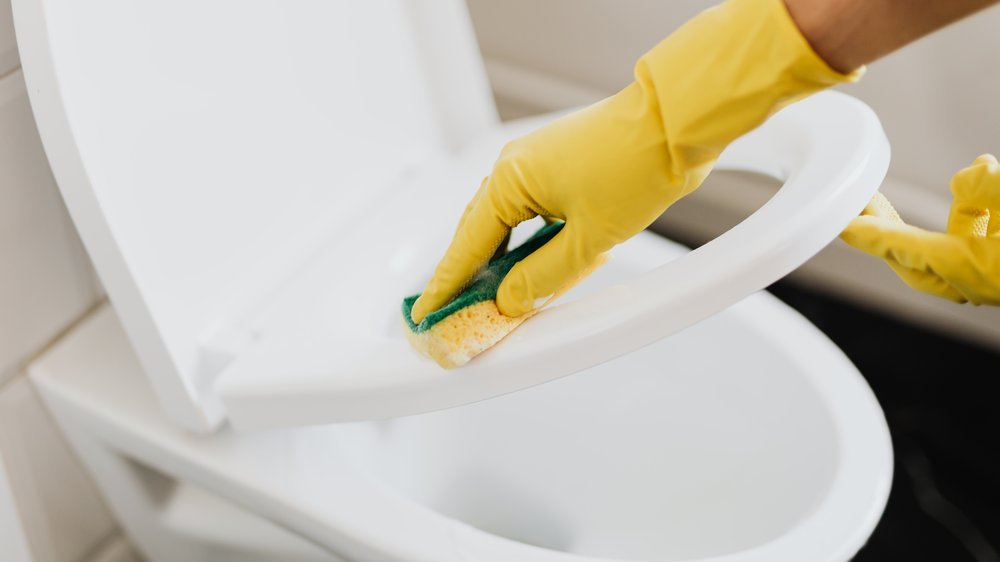
Complications with the Overflow Tube
Water overflow in a toilet can be a messy and inconvenient problem. However, with the help of the overflow tube, this issue can be prevented. Unfortunately, the overflow tube itself can encounter complications that affect the efficiency of flushing.
One common problem is when the tube becomes clogged with debris. This disrupts the flow of water, leading to incomplete flushing. Another issue arises when the overflow tube is damaged or broken, resulting in water leakage and potential damage to the surroundings.
To prevent these problems, regular inspection and timely repair are essential. Improper installation or adjustment of the overflow tube can also impact flushing efficiency. It is crucial to position and adjust the tube correctly to ensure proper water flow and flushing.
Regular maintenance and inspection can help identify and rectify any installation or adjustment issues. To avoid complications altogether, keeping the overflow tube clear and unobstructed is important. Regular cleaning and maintenance can prevent the accumulation of debris and blockages.
By addressing any issues promptly, you can ensure that your toilet functions efficiently and avoid potential problems.
Clearing a Clogged Toilet
Conquering the challenge of a clogged toilet ? Here’s what you must know. Begin with a plunger equipped with a flange for an impeccable seal and enhanced suction power.
Position the plunger atop the drain hole in the toilet bowl and exert firm pressure to establish a tight seal. Then, with unwavering determination, exert forceful pushes and pulls on the plunger to dislodge the stubborn clog. This relentless motion generates immense pressure, compelling the clog to yield and traverse through the intricate network of pipes.
Should the clog prove to be unyielding, consider employing the services of a toilet auger . This marvel of modern plumbing engineering, a flexible cable , ventures further into the depths of the pipes, obliterating any obstructions in its path. Insert the auger into the drain hole and gradually rotate the handle, methodically navigating through the tenacious clog.
Once the clog is vanquished, perform a triumphant flush to ensure the restoration of proper drainage. Never forget the importance of safeguarding oneself. Don gloves and other protective gear, for safety should always reign supreme when confronted with the challenges of plumbing.
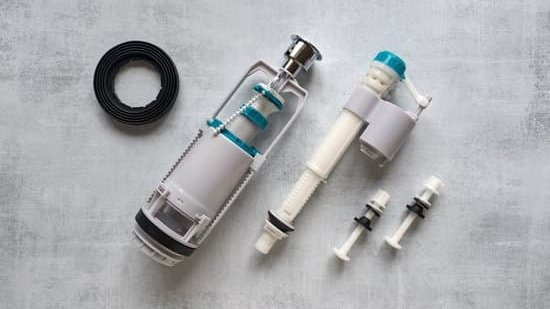
Fixing or Replacing the Flapper
A well-functioning toilet hinges on the meticulous care and upkeep of its flapper. If your flushes are lackluster, it is crucial to fine-tune the flapper for a secure seal. Look out for telltale signs of a flawed flapper, like incessant water flow or feeble flushing.
In such instances, a flapper replacement might be in order. Regularly examining and cleansing the flapper will ward off potential troubles down the line. By adhering to these measures and remaining vigilant in your maintenance efforts, you can guarantee efficient flushing and steer clear of any flapper-related mishaps in the days ahead.
If you’re dealing with a slow-flushing toilet, check out our article “Toilet Flushes Slow” to find out how to fix the problem and get your toilet flushing smoothly again.
Cleaning the Inlet Holes
To ensure your toilet functions properly, don’t forget to clean the often overlooked inlet holes. Over time, these small openings can get clogged with mineral deposits and debris, which can affect the flushing efficiency. By regularly cleaning the inlet holes, you can keep your toilet in top shape.
Start by using a small brush to remove any buildup and ensure that water flows freely. Gently scrub the holes, being careful not to damage the surrounding surfaces. If mineral deposits are stubborn, vinegar can come to the rescue.
Simply pour some vinegar into the toilet tank and let it sit for a few hours or overnight. The acidic properties of vinegar will dissolve the deposits, making them easier to clean. After using vinegar or any other cleaning solution, flush the toilet several times to remove any residue.
This will prevent future clogs and maintain clear and unobstructed inlet holes. By regularly cleaning the inlet holes, you can prevent reduced flushing efficiency and keep your toilet running smoothly. So grab a small brush, some vinegar, and get cleaning for a toilet that’s good as new.
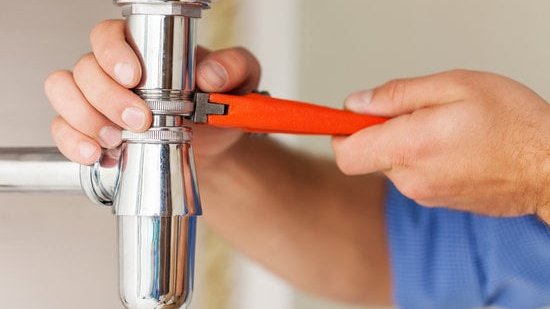
Possible Causes and Solutions Tabelle
| Possible Causes | Solutions |
|---|---|
| Clogged drain pipe | Use a plunger or toilet auger to clear the blockage. If the clog persists, consider using a chemical drain cleaner or contacting a professional plumber. |
| Insufficient water level in tank | Adjust the float or fill valve to ensure proper water level. The water level should be approximately 1 inch below the top of the overflow tube. |
| Malfunctioning flapper | Replace or adjust the flapper to allow proper water flow. The flapper should create a watertight seal when closed and open fully when the flush lever is pressed. |
| Partially closed or obstructed inlet holes | Clean or unclog the inlet holes to allow better water flow. Use a small brush or wire to remove any debris or mineral buildup from the inlet holes. |
| Damaged or incorrectly installed overflow tube | Replace or reposition the overflow tube to prevent water from draining prematurely. The overflow tube should be positioned correctly and not have any cracks or leaks. |
| Faulty fill valve assembly | Check and repair or replace the fill valve assembly for proper water flow. The fill valve should open fully and shut off properly when the tank is filled. |
| Low water pressure | Contact a professional plumber to assess and resolve the issue. Low water pressure may be caused by municipal supply problems or issues with the plumbing system. |
| Inadequate venting system | Consult with a plumber to ensure proper ventilation for optimal flushing. Inadequate venting can lead to poor flushing performance and potential sewer gas odors. |
| Sewer line blockage | Seek professional assistance to address any potential issues with the main sewer line. A clogged sewer line may require specialized equipment to clear the blockage. |
| Old or worn-out toilet components | Consider replacing outdated or malfunctioning toilet parts for improved flushing performance. This may include replacing the flush valve, flapper, or fill valve assembly. |
Adjusting or Replacing the Overflow Tube
When water spills from your toilet or pours into the overflow tube, it’s time to take action. Look out for signs of a damaged tube, such as leaks or a loose connection. To ensure everything functions as it should, make it a habit to regularly inspect and maintain the overflow tube.
To adjust the position of the tube, locate the water level adjustment screw on the fill valve. By turning it clockwise, you can lower the water level, and turning it counterclockwise will raise it. Aim to have the water level approximately 1 inch below the top of the overflow tube.
If the overflow tube is beyond repair, replace it. Simply remove the old tube and install a new one according to the manufacturer’s instructions. Remember, keeping a close eye on the overflow tube and promptly addressing any issues will keep your toilet running smoothly.
Don’t overlook signs of damage or leaks, and be proactive in making necessary adjustments or replacements to prevent future problems.
Checking and Repairing the Fill Valve Assembly
In the realm of bathroom fixtures , the fill valve reigns supreme in the domain of flushing. Yet, as with all things in this mortal realm, it too can succumb to the ravages of time. Should your porcelain throne find itself plagued by an incessant torrent or a feeble trickle, it is the fill valve assembly that may bear the blame.
Fear not, for there is a remedy to this vexation. By quelling the rushing waters, inspecting for signs of affliction, and perhaps even cleansing or adjusting the valve, you may yet restore harmony to your lavatory. And should all else fail, it may be necessary to replace the assembly entirely.
Remember, dear reader, that regular maintenance is the key to a trouble-free existence. Armed with knowledge and a deft touch, you shall ensure the eternal smoothness of your devout commode.
If you’ve noticed that the water level in your toilet bowl drops unexpectedly, check out our article on “Toilet Bowl Water Level Drops” to find out what might be causing it and how you can fix the issue.
1/2 When to Call a Professional
In the realm of plumbing matters, it is often wiser to entrust the task to the experts. If your attempts at DIY remedies have proven futile, it is a clear indication that the time has come to summon a professional plumber. These skilled individuals possess the necessary expertise to diagnose and rectify the issue efficiently, whether it be a stubborn obstruction or a defective flapper.
For intricate toilet problems, professional assistance is imperative. Should you observe significant damage to the toilet or its components, it is prudent to seek the aid of a professional. Armed with comprehensive knowledge and specialized tools, they are equipped to handle any intricate repairs or replacements that may be required.
By calling upon the services of a professional plumber, you not only save precious time and money but also spare yourself from the vexation that accompanies such issues. They possess the ability to swiftly identify the underlying cause and furnish a lasting solution. Undertaking the task of remedying complicated toilet problems on your own can potentially exacerbate the issue and lead to greater financial repercussions in the long haul.
Bear in mind, when DIY methods prove inadequate, do not hesitate to enlist the aid of professionals for intricate toilet issues.
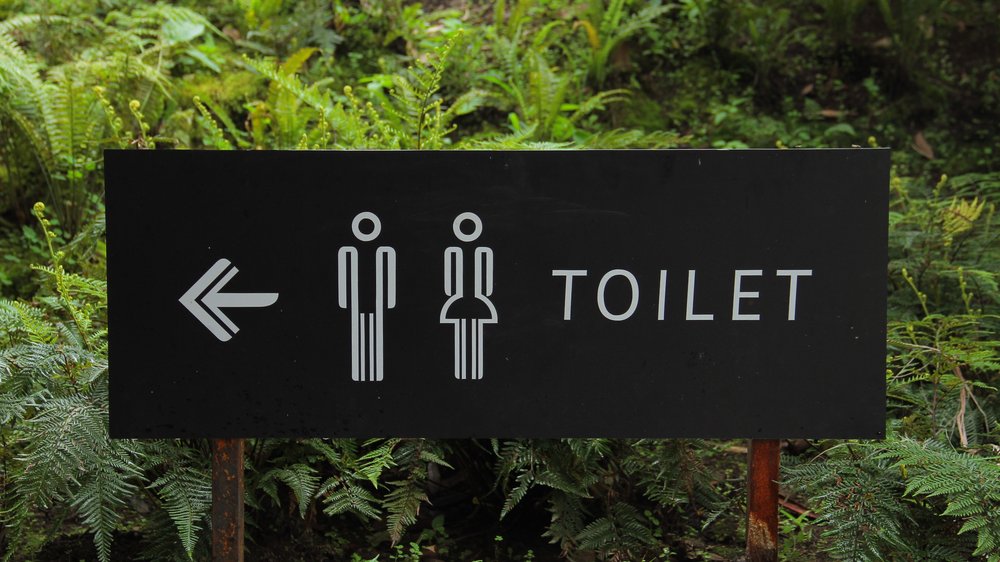
Is your toilet not flushing properly? Don’t worry, there’s an easy fix! In this informative video, you’ll learn how to resolve the issue and get your toilet flushing smoothly again in no time.
Related Posts
Proper Toilet Care: A Guide to a Flawless Flush Toilets, the unsung heroes of our daily lives, deserve our utmost care and attention. Maintaining a well-functioning toilet is not only essential for our comfort but also for the health and hygiene of our homes. In this article, we will explore some simple yet effective tips to ensure that your toilet remains in top-notch condition.
1. Embrace Regular Cleaning Rituals: A clean toilet is a happy toilet. Regularly clean your toilet using a toilet bowl cleaner and brush to prevent the buildup of dirt and bacteria. This not only keeps your toilet sparkling clean but also prevents unpleasant odors from permeating your bathroom sanctuary.
2. The Leaky Menace: A leaking toilet not only wastes water but also contributes to skyrocketing utility bills. So, be vigilant and promptly address any leaks you come across. A small leak today can quickly transform into a costly nightmare tomorrow.
3. The Perfect Water Level: Achieving the ideal water level in your toilet tank is crucial for a flawless flush. A continuous running toilet or an incomplete flush can be a major inconvenience. Fear not, for there is a simple solution.
Use the fill valve adjustment screw or float assembly to adjust the water level to perfection.
4. Handle with Care: Teach everyone in your household the importance of using the flush handle with care. Vigorous flushing can damage the delicate components of your toilet, leading to costly repairs. Handle with respect, and your toilet shall reward you with years of faithful service.
Incomplete Flushing Woes: Unraveling the Mysteries Now that we have covered the basics of toilet care, let us delve into the common causes of incomplete flushing. Understanding these culprits will empower you to tackle the issue head-on.
1. Flapper Follies: Misaligned, damaged, or worn-out flappers are notorious for causing incomplete flushing. Keep a keen eye on these little troublemakers and replace them when necessary.
2. Clogging Catastrophes: A clogged drain or pipe can turn a simple trip to the bathroom into a nightmare. Fear not, for you have the power to combat this menace. Equip yourself with a plunger or toilet auger and clear those blockages like a champion.
A Future of Flawless Flushing: Your Action Plan Prevention is the key to a trouble-free toilet. By following these simple steps, you can prevent future flushing issues and maintain a harmonious relationship with your porcelain companion.
1. Embrace Regular Maintenance: Make it a habit to clean your toilet, check for leaks, and adjust the water level regularly. This proactive approach will nip any potential issues in the bud, ensuring a smooth and efficient flushing experience.
2. The Art of Flushing: Remember, toilets are not designed to be trash cans. Dispose of flushable items only, such as toilet paper. Avoid flushing wipes, sanitary products, or paper towels, as they can cause stubborn clogs that will test your patience.
By implementing these tips and treating your toilet with the respect it deserves, you can bid farewell to frustrating flushing issues. Your well-functioning toilet will reward you with a tranquil bathroom haven and a sense of accomplishment for your diligent care.
If you’re interested in finding the perfect tiny toilet for your small space, check out our article “Tiny Toilet” for some helpful tips and recommendations.
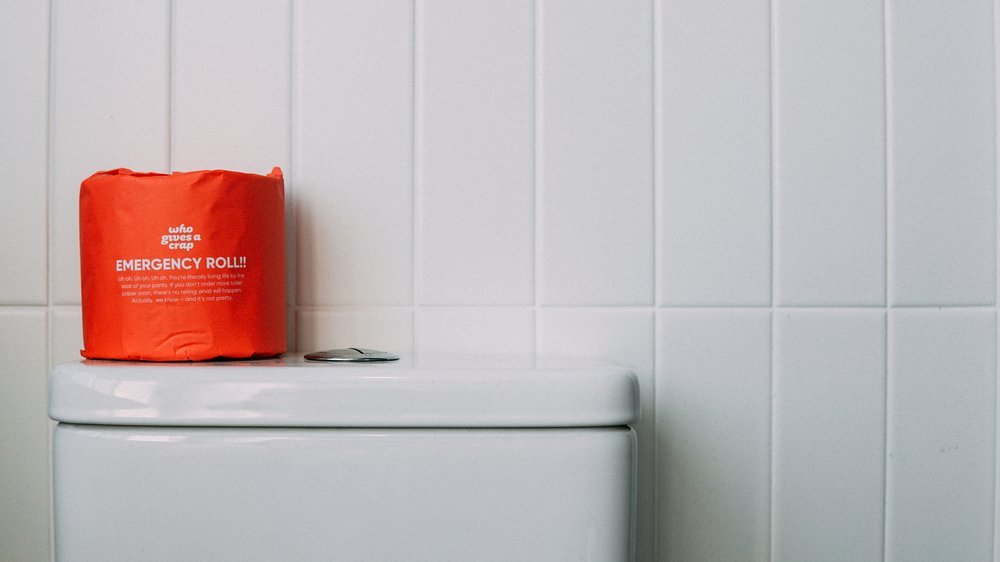
Recent Posts
Are you tired of dealing with a toilet that just won’t flush properly ? Frustrating , isn’t it? Well, fear not, because we’re here to lend a helping hand.
In this post, we’ll provide you with some invaluable tips to troubleshoot those pesky toilet flushing problems. One of the key secrets to a smoothly functioning toilet lies in properly maintaining and cleaning the toilet flapper. It may sound like a small thing, but trust us, it makes a world of difference.
We’ll guide you step-by-step on how to effectively take care of this crucial component. But that’s not all. We’ll also shed light on the importance of regular inspection and maintenance of the overflow tube.
This often overlooked aspect can be the root cause of water overflowing and causing a whole lot of mess. By following our expert advice, you can ensure that your toilet remains in optimal condition, flushing like a dream. Say goodbye to those frustrating flushing issues and hello to a worry-free bathroom experience.
Be sure to stay tuned for more informative posts on toilet troubleshooting and maintenance. We’ve got your back!
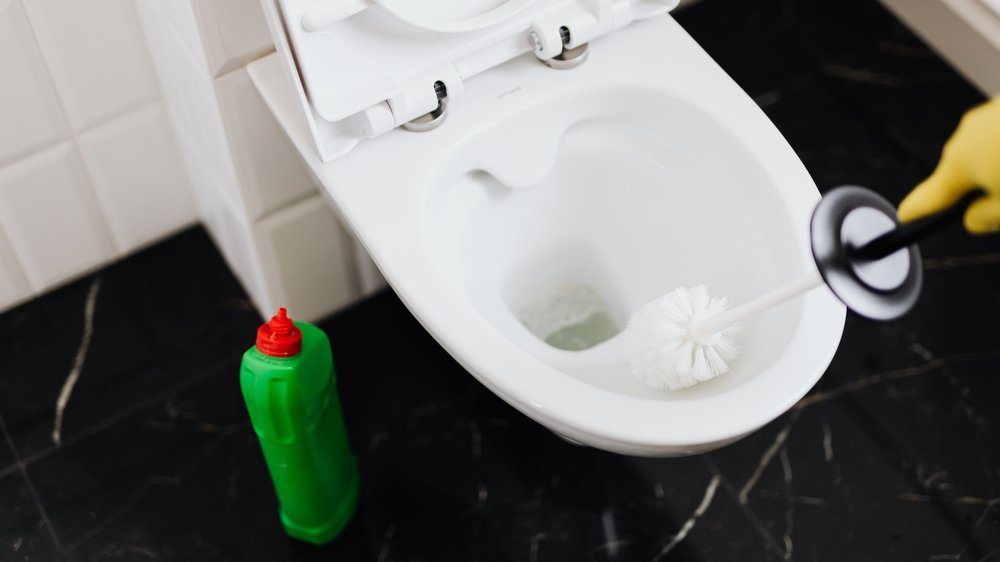
All Posts by Topic
In this article, we’ll delve into the realm of DIY solutions for troublesome toilet flushing and how to rectify a faulty fill valve assembly. We’ll also emphasize the significance of regular maintenance in order to avert potential future problems. Instead of immediately summoning a plumber, there exist a handful of uncomplicated DIY remedies for flushing predicaments.
A feeble or incomplete flush might be the result of a drain clog or a malfunctioning flapper. To tackle this, you can attempt dislodging the clog with a plunger or employ a toilet auger for more stubborn obstructions. In the event that the issue lies with the fill valve assembly, there are measures you can undertake to resolve it.
Inspect for leaks or an incessant flow of water into the bowl, as this may indicate a defective fill valve. It may be necessary to adjust or replace the fill valve assembly. By regularly inspecting and maintaining the fill valve assembly, you can prevent the emergence of further complications.
Consistent maintenance is of utmost importance when aiming to forestall future toilet predicaments. Regularly clean the toilet, scrutinize for leaks or drips, and ensure that the flapper, overflow tube, and inlet holes are unobstructed and functioning correctly. By adhering to these steps, you will maintain your toilet’s optimal functionality and evade exorbitant repairs.
It is vital to remember that if DIY methods prove futile or if you are uncertain about repairs, it is advisable to seek the expertise of a professional plumber . They possess the necessary knowledge and tools to tackle intricate toilet issues and ensure efficient operation.
Troubleshooting Tips for a Toilet that Doesnt Fully Flush
- The flapper is an essential component of toilet mechanics, responsible for controlling the flow of water from the tank to the bowl.
- The overflow tube plays a crucial role in preventing the toilet from overflowing by providing an alternate route for excess water.
- Inlet holes, located under the rim of the toilet bowl, allow water to enter and create a swirling motion for an effective flush.
- Clogged toilets can be identified by signs such as slow drainage, water rising to the rim, or gurgling sounds.
- A malfunctioning flapper can cause continuous running water or insufficient flushing.
- If the inlet holes are clogged, it can lead to weak or incomplete flushing.
- Complications with the overflow tube, such as blockages or improper height, can result in water overflowing from the toilet.
- To fix a toilet that doesn’t fully flush, try clearing a clog using a plunger or a toilet auger.
All Posts by Date
When your toilet refuses to fully flush, it can be an exasperating dilemma. But fret not, there are remedies to troubleshoot and resolve this predicament. To avert flushing mishaps, regular upkeep is paramount.
Keep your toilet pristine and obstruction-free by cleansing the flapper, examining the overflow tube, and scrutinizing the fill valve assembly. When your toilet fails to flush completely, begin by inspecting the bowl or drain pipe for any conspicuous blockages. Clear them with the aid of a plunger or toilet auger.
If the issue persists or appears more intricate, it is time to summon a professional plumber. Recognizing the appropriate time to seek professional assistance is pivotal. If you have exhausted DIY methods and the problem lingers, entrust it to the experts.
They possess the expertise and know-how to diagnose and rectify complex toilet maladies. In conclusion, upholding toilet maintenance, employing DIY techniques, and enlisting professional aid when necessary will ensure the optimal condition of your toilet and ward off future flushing predicaments.
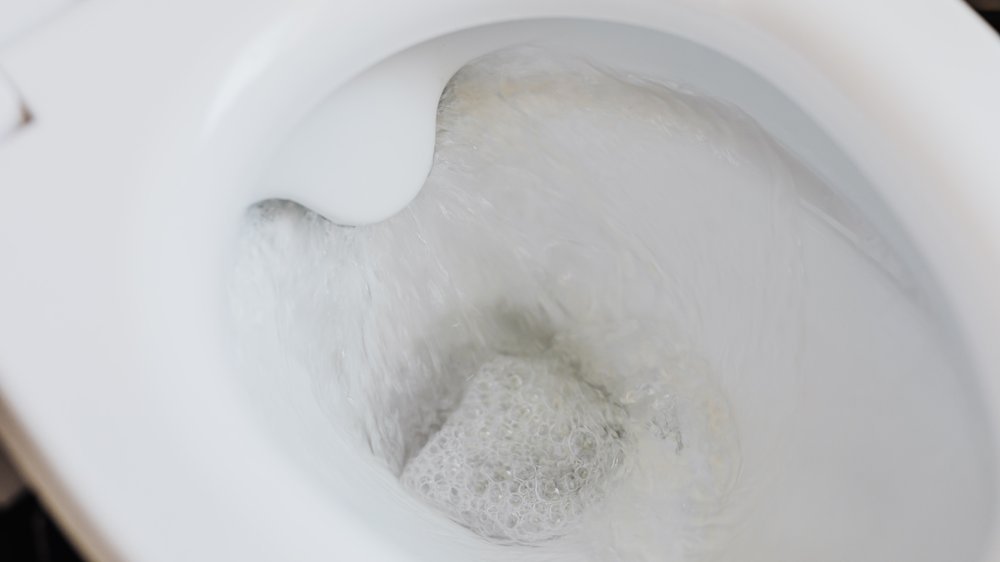
Tags
When it comes to toilet flushing troubles, there are a few common culprits that can hinder a complete flush. One of the main causes is an overflow tube that is misaligned or improperly adjusted. This tube plays a crucial role in preventing water overflow in the toilet bowl, and if it’s not in the right position, it can disrupt the flushing process.
To address this issue, there are a few simple steps you can take. Start by locating the tube inside the toilet tank. Ensure that it is positioned at least an inch below the top of the overflow pipe.
This adjustment helps regulate the water level in the tank. If necessary, you can use a screwdriver or pliers to make the necessary height adjustments. Another frequent culprit behind incomplete flushing is a malfunctioning flapper.
This rubber valve controls the release of water from the tank into the bowl during flushing. If it’s not functioning correctly, it can result in inadequate flushing. To troubleshoot this issue, check if the flapper is correctly aligned and if the chain length is appropriate.
Often, adjusting the chain or realigning the flapper can resolve the problem. Lastly, if you’re experiencing flushing difficulties, there are a few additional steps you can take. Firstly, inspect the toilet bowl and drain pipe for any clogs.
You can use a plunger or toilet auger to remove any obstructions that may be impeding the flushing process. Additionally, ensure that the inlet holes in the toilet bowl are clean and clear. Regular maintenance and cleaning of these holes will contribute to effective flushing.
By following these steps and understanding the common causes of incomplete flushing, you can ensure that your toilet continues to function properly and avoid any future issues.
Are you tired of dealing with a toilet that’s constantly leaking from the handle? Check out our article “Toilet Leaking from Handle” to find out how to fix this common issue and put an end to those annoying leaks.
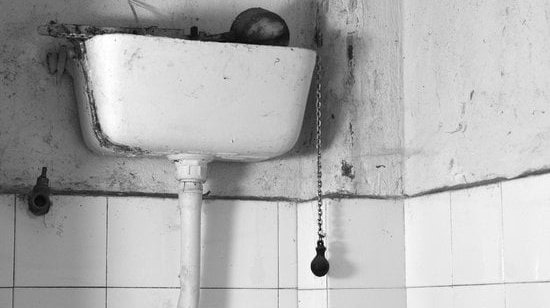
Connect with Us
Embark on a journey into the world of toilet troubleshooting , where knowledge and guidance await you. As a member of our online community, you’ll gain access to exclusive expert advice and tips, ensuring your toilet remains a pinnacle of perfection. But that’s not all.
Our vibrant community also keeps you in the loop about the cutting-edge trends and innovations in toilet technology. Stay ahead of the curve and unlock the secrets to enhancing your toilet’s functionality and efficiency. From ingenious water-saving features to the brilliance of smart toilets, we’ll keep you informed and inspired.
Beyond the realm of toilets, our online community connects you with fellow adventurers who share your experiences and challenges. Engage in lively discussions, exchange personal anecdotes, and seek advice from those who have braved similar toilet tribulations. Together, we’ll build a community that fosters growth and nurtures learning.
Don’t let this opportunity pass you by. Join our online community today and bask in the exclusive benefits of expert advice, up-to-the-minute technology updates, and a supportive network of like-minded individuals. Together, we’ll ensure your toilet reigns supreme.
2/2 CONCLUSION
In conclusion, understanding the basics of toilet mechanics is crucial for identifying and fixing issues with a toilet that doesn’t fully flush. By knowing the function of the flapper , the role of the overflow tube , and the importance of the inlet holes , individuals can troubleshoot and resolve problems effectively. Clearing clogs, fixing or replacing the flapper, cleaning the inlet holes, adjusting or replacing the overflow tube, and checking and repairing the fill valve assembly are all potential solutions to address the issue.
However, if these steps prove to be ineffective, it may be necessary to call a professional for assistance. Overall, this article provides valuable insights and practical tips for maintaining a fully functional toilet. For more helpful articles on plumbing and home maintenance, we recommend exploring our other resources to further enhance your knowledge and skills.
FAQ
How do you fix a toilet that doesn’t flush all the way?
If your toilet is not flushing properly, there are several potential reasons to consider. First, try to identify the problem by narrowing down the possible causes. Once you have determined the cause, you can proceed with the appropriate solution. A common issue is a clogged toilet, which can be resolved by clearing the blockage. Additionally, check the flapper, inlet holes, overflow tube, and fill valve assembly to ensure they are functioning correctly. By addressing these potential problems, you can resolve the issue and restore proper flushing to your toilet.
How can I make my toilet flush stronger?
To ensure effective flushing, toilets are equipped with small holes known as flush holes. These holes are designed to direct water from the tank down the sides of the toilet bowl, ensuring that all waste water is flushed down the drain. However, over time, these flush holes can become blocked with mineral deposits, resulting in reduced water pressure. Therefore, it is important to clear these mineral deposits to maintain optimal water flow and flushing performance.
Why won’t my toilet flush but it’s not clogged?
If your toilet is not flushing, it’s important to inspect the components of the toilet cistern for any damage or issues. Just like you would check the fill valve if your toilet is constantly running, make sure to examine the lift chain, flush valve, water valve, float ball, and other parts. If you don’t notice any visible problems or if you’re unsure about how to proceed, it might be a good idea to contact a plumber for assistance.
Why is my toilet flush so weak?
The two most common types of sediment buildup that can affect the flushing of your toilet are calcium and rust. Over time, these substances can accumulate and block the holes through which water enters the toilet bowl, resulting in a weak or incomplete flush. To address this issue, it is important to clean the rim feed and jet holes regularly in order to prevent sediment buildup and maintain proper flushing performance.


